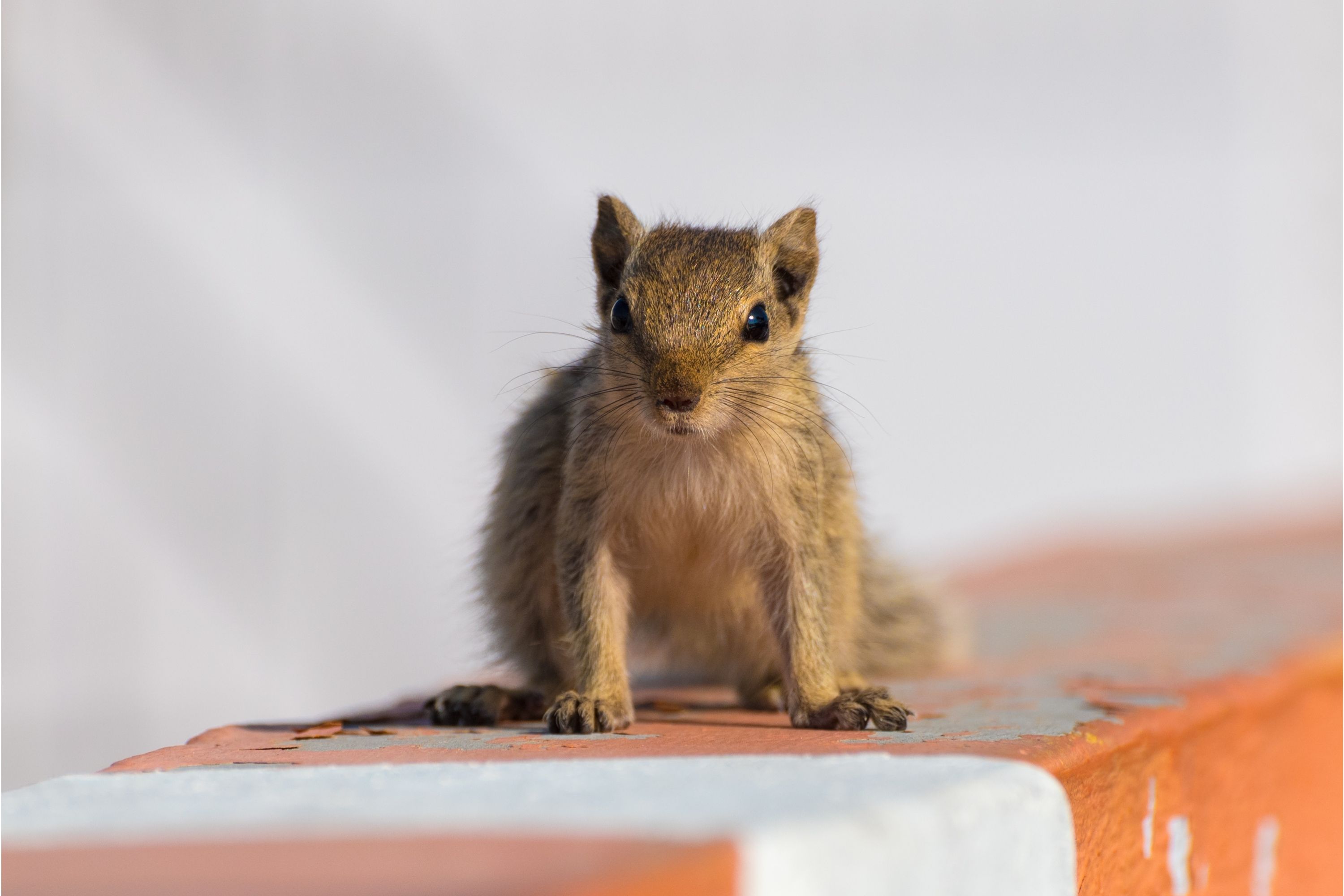Indian palm squirrel
(Funambulus palmarum)

Description
The Indian palm squirrel or three-striped palm squirrel (Funambulus palmarum) is a species of rodent in the family Sciuridae found naturally in India (south of the Vindhyas) and Sri Lanka. In the late 19th century, the palm squirrel was introduced to Madagascar, Réunion, Mayotte, Comoro Islands, Mauritius, Seychelles and Australia, where it has since become a minor pest. The closely related five-striped palm squirrel, F. pennantii, is found in northern India, and its range partly overlaps with this species. The palm squirrel is about the size of a large chipmunk, with a bushy tail slightly shorter than its body. The back is a grizzled, grey-brown colour with three conspicuous white stripes which run from head to tail. The two outer stripes run from the forelegs to the hind legs only. It has a creamy-white belly and a tail covered with interspersed, long, black and white hair. The ears are small and triangular. Juvenile squirrels have significantly lighter coloration, which gets progressively darker as they age. Albinism is rare, but exists in this species. The gestation period is 34 days; breeding takes place in grass nests during the autumn. Litters of two or three are common, and average 2.75. The young are weaned after about 10 weeks and are sexually mature at 9 months. Adult weight is 100 g. Little is known about their longevity, but one specimen lived 5.5 years in captivity.
Taxonomic tree:







